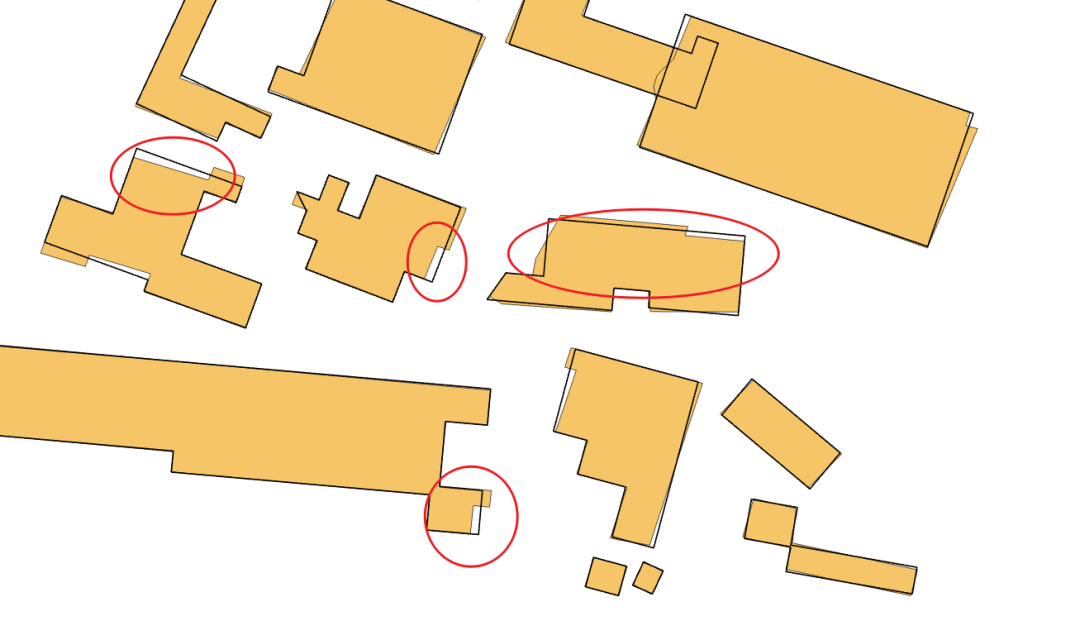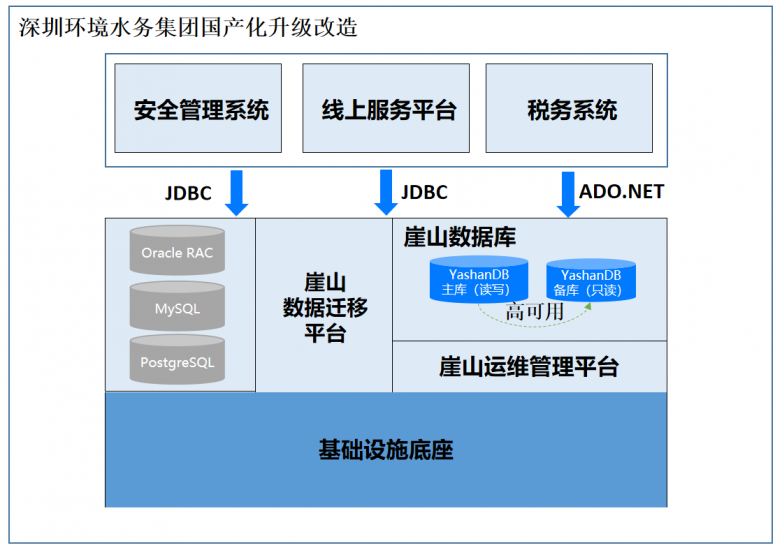Python 数值计算与数值分析基础
示例演示
当涉及到Python数值计算和数值分析时,下面是20个示例,涵盖了一些常见的用法:
1.数值积分:
在 Python 中,你可以使用 scipy.integrate 模块中的 quad 函数来进行数值积分
import numpy as np
from scipy.integrate import quad
# 定义被积函数
f = lambda x: np.sin(x)
# 计算积分
result, error = quad(f, 0, np.pi)
# 输出结果
print("积分结果:", result)
print("误差估计:", error)
积分结果: 2.0
误差估计: 2.220446049250313e-14
2.数值微分:
import numpy as np
# 定义函数
f = lambda x: np.cos(x)
# 定义微分点和一个很小的h值
x0 = 0.5
h = 1e-5
# 计算数值微分(使用中心差分法)
numerical_derivative = (f(x0 + h) - f(x0 - h)) / (2 * h)
# 输出结果
print("数值导数结果:", numerical_derivative)
数值导数结果: -0.47942553859647846
3.非线性方程求根:
在 Python 中,你可以使用 scipy.optimize 模块的 fsolve 函数来求解方程。
import numpy as np
from scipy.optimize import fsolve
# 定义方程
def equation(x):
return x**2 - 2
# 使用 fsolve 进行求解
solution = fsolve(equation, 1.5)
# 输出结果
print("方程的解:", solution[0])
方程的解: 1.4142135623730951
4.线性方程组求解:
在 Python 中,使用 NumPy 库可以方便地处理矩阵和线性代数运算。使用 np.linalg.solve(A, b) 函数求解线性方程组Ax=b。
import numpy as np
# 定义矩阵 A 和向量 b
A = np.array([[1, 2], [3, 4]])
b = np.array([5, 6])
# 求解线性方程 Ax = b
x = np.linalg.solve(A, b)
# 输出结果
print("解 x:", x)
解 x: [-4. 4.5]
5.曲线拟合:
在 Python 中,你可以使用 NumPy 和 SciPy 库来生成数据,并使用 Matplotlib 进行绘图。对于拟合功能,可以使用 scipy.optimize.curve_fit 来实现。
import numpy as np
import matplotlib.pyplot as plt
from scipy.optimize import curve_fit
# 定义 sine 函数
def sin_func(x, a, b, c, d):
return a * np.sin(b * x + c) + d
# 生成数据
x = np.linspace(0, 2 * np.pi, 100)
y = np.sin(x) + np.random.rand(len(x)) * 0.2 # 添加随机噪声
# 拟合数据
initial_guess = [1, 1, 0, 0] # 初始猜测参数
params, covariance = curve_fit(sin_func, x, y, p0=initial_guess)
# 生成拟合曲线
y_fit = sin_func(x, *params)
# 绘制结果
plt.scatter(x, y, label='Data', color='blue')
plt.plot(x, y_fit, label='Fitted Curve', color='red')
plt.title('Sine Fit')
plt.xlabel('x')
plt.ylabel('y')
plt.legend()
plt.show()

6.矩阵特征值和特征向量:
在 Python 中,你可以使用 NumPy 库来计算矩阵的特征值和特征向量。使用 np.linalg.eig 函数计算特征值和特征向量。
import numpy as np
# 定义矩阵 A
A = np.array([[1, 2], [3, 4]])
# 计算特征值和特征向量
eig_val, eig_vec = np.linalg.eig(A)
# 输出结果
print("特征值:\n", eig_val)
print("特征向量:\n", eig_vec)
特征值:
[-0.37228132 5.37228132]
特征向量:
[[-0.82456484 -0.41597356]
[ 0.56576746 -0.90937671]]
7.傅里叶变换:
import numpy as np
import matplotlib.pyplot as plt
# 设置采样频率
Fs = 1000
# 生成时间序列
t = np.arange(0, 1, 1/Fs)
# 生成信号
x = np.sin(2 * np.pi * 50 * t) + np.sin(2 * np.pi * 120 * t)
# 进行快速傅里叶变换
y = np.fft.fft(x)
# 计算频率轴
f = np.fft.fftfreq(len(y), d=1/Fs)
# 绘制幅度谱
plt.plot(f, np.abs(y))
plt.title('FFT of the Signal')
plt.xlabel('Frequency (Hz)')
plt.ylabel('Magnitude')
plt.xlim(0, Fs/2) # 只显示正频率部分
plt.grid()
plt.show()

8.信号滤波:
以下代码创建了一个包含 50 Hz 和 120 Hz 正弦波的信号,然后使用带通滤波器对信号进行滤波,并将原始信号和滤波后的信号绘制在同一图中。
import numpy as np
import matplotlib.pyplot as plt
from scipy.signal import butter, filtfilt
# 设置采样频率
Fs = 1000
# 生成时间序列
t = np.arange(0, 1, 1/Fs)
# 生成信号
x = np.sin(2 * np.pi * 50 * t) + np.sin(2 * np.pi * 120 * t)
# 设计带通滤波器
lowcut = 45 # 低截止频率
highcut = 55 # 高截止频率
b, a = butter(3, [lowcut, highcut], fs=Fs, btype='bandpass')
# 使用 filtfilt 进行零相位滤波
filtered_signal = filtfilt(b, a, x)
# 绘制原始信号和滤波后的信号
plt.figure(figsize=(10, 6))
plt.plot(t, x, label='Original Signal', alpha=0.7)
plt.plot(t, filtered_signal, label='Filtered Signal', linewidth=2)
plt.title('Signal Before and After Bandpass Filtering')
plt.xlabel('Time (seconds)')
plt.ylabel('Amplitude')
plt.legend()
plt.grid()
plt.show()

9.最小二乘拟合:
import numpy as np
import matplotlib.pyplot as plt
# 定义数据点
x = np.array([1, 2, 3, 4, 5])
y = np.array([1, 3, 6, 10, 15])
# 进行二次多项式拟合
p = np.polyfit(x, y, 2)
# 计算拟合值
f = np.polyval(p, x)
# 绘制数据点和拟合曲线
plt.plot(x, y, 'o', label='Data Points') # 原始数据点
plt.plot(x, f, label='Fitted Curve') # 拟合曲线
plt.title('Polynomial Fit')
plt.xlabel('x')
plt.ylabel('y')
plt.legend()
plt.grid()
plt.show()

10.数值优化问题求解:
使用 scipy.optimize 库中的 minimize 函数来实现无约束优化。
import numpy as np
from scipy.optimize import minimize
# 定义目标函数
def fun(x):
return x[0]**2 + x[1]**2
# 初始猜测
x0 = np.array([1, 1])
# 使用 minimize 进行无约束优化
result = minimize(fun, x0)
# 输出优化结果
print("Optimized parameters:", result.x)
print("Objective function value at optimized parameters:", result.fun)
Optimized parameters: [-1.07505143e-08 -1.07505143e-08]
Objective function value at optimized parameters: 2.311471135620994e-16
11.数值积分:
使用 scipy.integrate 模块中的 quad 函数来进行数值积分。
import numpy as np
from scipy.integrate import quad
# 定义被积函数
def func(x):
return 1 / (1 + x**2)
# 进行定积分
integral_value, error = quad(func, 0, 1)
# 输出积分值和误差
print("Integral value:", integral_value)
print("Estimated error:", error)
Integral value: 0.7853981633974484
Estimated error: 8.719671245021581e-15
12.插值:
使用 numpy 处理数组,使用 matplotlib.pyplot 绘制图形,使用 scipy.interpolate 进行插值。
import numpy as np
import matplotlib.pyplot as plt
from scipy.interpolate import interp1d
# 原始数据点
x = [0, 1, 2, 3]
y = [1, 4, 9, 16]
# 生成插值点
xi = np.arange(0, 3.1, 0.1)
# 创建插值函数
interp_func = interp1d(x, y, kind='linear')
# 计算插值结果
yi = interp_func(xi)
# 绘制原始数据点和插值结果
plt.plot(x, y, 'o', label='Original data')
plt.plot(xi, yi, label='Interpolated data')
plt.xlabel('x')
plt.ylabel('y')
plt.title('Interpolation Example')
plt.legend()
plt.grid()
plt.show()

13.求解常微分方程组:
使用 scipy.integrate 模块中的 solve_ivp 函数来解决常微分方程,并使用 matplotlib 来绘制图形。
import numpy as np
import matplotlib.pyplot as plt
from scipy.integrate import solve_ivp
# 定义微分方程
def func(t, y):
return [y[1], -y[0]]
# 设定时间范围和初始条件
t_span = (0, 10)
y0 = [1, 0]
# 使用 solve_ivp 解决微分方程
sol = solve_ivp(func, t_span, y0, t_eval=np.linspace(0, 10, 100))
# 绘制结果
plt.plot(sol.t, sol.y[0])
plt.xlabel('Time (t)')
plt.ylabel('y(t)')
plt.title('Solution of ODE')
plt.grid()
plt.show()

14.数值统计:
在 Python 中,numpy 库提供了计算均值和标准差的函数。
import numpy as np
# 定义数据
data = [1, 2, 3, 4, 5]
# 计算均值和标准差
mean_value = np.mean(data)
std_value = np.std(data)
# 打印结果
print("Mean:", mean_value)
print("Standard Deviation:", std_value)
Mean: 3.0
Standard Deviation: 1.4142135623730951
15.随机数生成:
在 Python 中,可以使用 numpy 库的 random.rand 函数生成随机数。
import numpy as np
# 生成 1 到 10 之间的随机数
random_num = np.random.rand(1, 10)
# 打印结果
print(random_num)
[[0.08318904 0.2923153 0.1923046 0.96278395 0.93616543 0.48201543
0.27400168 0.62454063 0.63461248 0.64493564]]
16.多项式求根:
在 Python 中,可以使用 numpy 库的 numpy.roots 函数来计算多项式的根。
import numpy as np
# 定义多项式系数
coefficients = [1, -3, 2]
# 计算多项式的根
roots_of_polynomial = np.roots(coefficients)
# 打印结果
print("Roots of the polynomial:", roots_of_polynomial)
Roots of the polynomial: [2. 1.]
17.矩阵求逆:
在 Python 中,可以使用 numpy 库来创建矩阵并计算其逆。使用 np.linalg.inv(A) 计算矩阵A的逆。
import numpy as np
# 定义矩阵 A
A = np.array([[1, 2], [3, 4]])
# 计算矩阵 A 的逆
inv_A = np.linalg.inv(A)
# 打印结果
print("Inverse of A:\n", inv_A)
Inverse of A:
[[-2. 1. ]
[ 1.5 -0.5]]
18.线性插值:
import numpy as np
import matplotlib.pyplot as plt
# 定义数据点
x = [0, 1, 2]
y = [1, 3, 2]
# 定义插值点
xi = np.arange(0, 2.1, 0.1) # 生成从0到2(包括2)的数,步长为0.1
# 进行线性插值
yi = np.interp(xi, x, y)
# 绘制结果
plt.plot(x, y, 'o', label='Data Points') # 绘制原始数据点
plt.plot(xi, yi, label='Linear Interpolation') # 绘制插值曲线
plt.xlabel('x')
plt.ylabel('y')
plt.title('Linear Interpolation Example')
plt.legend()
plt.grid()
plt.show()

19.蒙特卡洛方法:
以下Python 代码,使用 numpy 来生成随机数,并估算圆周率 π 的值。
import numpy as np
# 初始化计数器和样本数
count = 0
n = 100000
# 进行 Monte Carlo 模拟
for _ in range(n):
x = np.random.rand() # 生成 [0, 1) 之间的随机数
y = np.random.rand() # 生成 [0, 1) 之间的随机数
if x**2 + y**2 <= 1: # 检查是否在单位圆内
count += 1
# 估算 π
pi_estimate = 4 * count / n
print(f"Estimated value of π: {pi_estimate}")
Estimated value of π: 3.14684
20.矩阵求秩:
在 Python 中,可以使用 numpy 库来创建矩阵并计算其秩(rank)。
import numpy as np
# 定义矩阵 A
A = np.array([[1, 2], [3, 4]])
# 计算矩阵 A 的秩
rank_A = np.linalg.matrix_rank(A)
print(f"Rank of matrix A: {rank_A}")
Rank of matrix A: 2
这些示例展示了Python中数值计算和数值分析的一些常见用法。你可以通过这些示例来了解如何使用Python进行数值计算和分析,并可根据具体需求进行进一步修改和调整。在实际应用中,可以根据具体问题选择合适的函数和方法进行数值计算和分析。







![[Halcon矩阵] 通过手眼标定矩阵计算相机旋转角度](https://i-blog.csdnimg.cn/blog_migrate/6ea5c89da2fed45d39fe648fd677a8f9.png)











